
Description
Japanese Surrender: Manila Negotiations and Documents, August 1945
August 19, 1945:
- Japanese Emissaries Arrive in Manila: Emissaries appointed by the Emperor of Japan arrive in Manila with the mission to negotiate surrender arrangements as directed by the Supreme Commander for the Allied Powers.
- Documents Presented to Chief of Staff: On this date, the Japanese emissaries present a set of documents to the Chief of Staff at the city hall in Manila. These documents contain information required by the Supreme Commander for the Allied Forces.
- Documents Reproduced: The General Headquarters United States Army Forces, Pacific Office of The Assistant Chief Of Staff, G-2, reproduces these submitted documents.
- Part I: Consists of copies of documents originally written in English and translations of documents originally written in Japanese.
- Part II: Consists of translations of maps and charts that elaborate on the information presented in Part I. This includes maps of airfields, data on prisoner numbers in southern areas, locations of prisoner-of-war camps and employment sites, Army and Navy air bases in the Kanto region and to the west, and battle order maps.
Cast of Characters
- Emperor of Japan: The sovereign ruler of Japan who appointed the emissaries to negotiate the surrender. His specific identity is not provided in the source, but he is the ultimate authority behind the Japanese mission.
- Japanese Mission to Negotiate Surrender (Japanese Emissaries): Individuals appointed by the Emperor of Japan to carry out the surrender negotiations. Their names are not specified, but they are the direct representatives presenting the documents.
- Supreme Commander for the Allied Powers (SCAP): The ultimate authority for the Allied forces to whom the Japanese surrender arrangements are to be made. While named, his specific identity (General Douglas MacArthur) is not provided in this specific excerpt.
- Supreme Commander for the Allied Forces: Likely refers to the same individual as SCAP, who required the information contained in the submitted documents.
- Chief of Staff (at Manila City Hall): The individual who received the surrender documents from the Japanese emissaries on August 19, 1945, in Manila. His specific identity is not provided.
- General Headquarters United States Army Forces, Pacific Office of The Assistant Chief Of Staff, G-2: This is an organizational entity responsible for reproducing and likely analyzing the surrender documents. Its personnel are involved in processing the information but are not individually named.
World War II Documents Submitted by Japan During Surrender
Document: Documents Submitted to The Supreme Commander for the Allied Forces by the Japanese Mission to Negotiate Surrender. Manila, 19 August 1945.
Produced by the General Headquarters United States Army Forces, Pacific Office of The Assistant Chief Of Staff, G-2
Abstract: The Japanese emissaries, appointed by the Emperor of Japan to make “any arrangements directed by the Supreme Commander for the Allied Powers”, brought documents containing the information required by the Supreme Commander for the Allied Forces. On 19 August 1945 these documents were presented to the Chief of Staff at the city hall, Manila. They are reproduced in two parts. Part I consists of copies of the documents which were written in English and translations of the documents which were written in Japanese. Part II consists of translations of maps and charts amplifying the information contained in Part I. Contents of part 2: maps of airfields, showing number of prisoners in southern areas, prisoners-of-war camps and places of employment, Army and Navy air bases in the Kanto and to the west, and battle order maps.
Related products
-
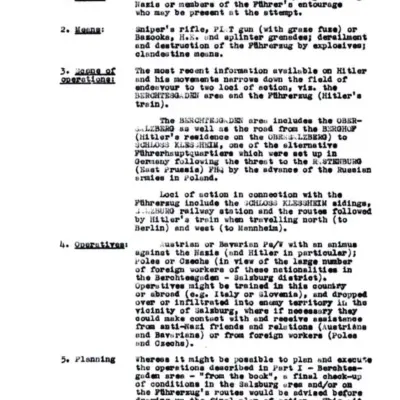
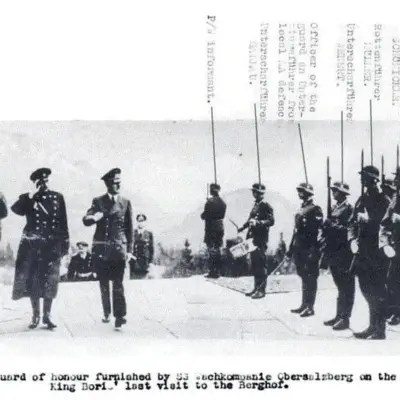
World War II: Adolf Hitler and Operation Foxley – British Assassination Plot
$19.50 Add to Cart -
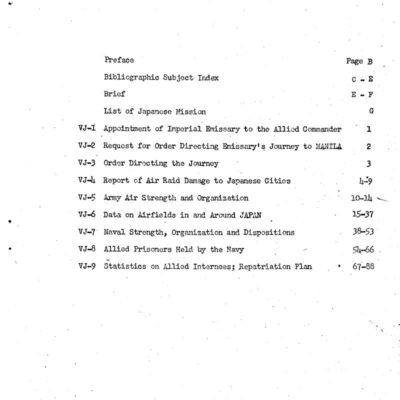
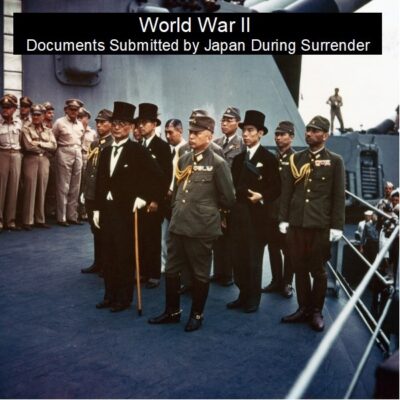
Japan’s Surrender Documents from World War II
$1.99 Add to Cart -
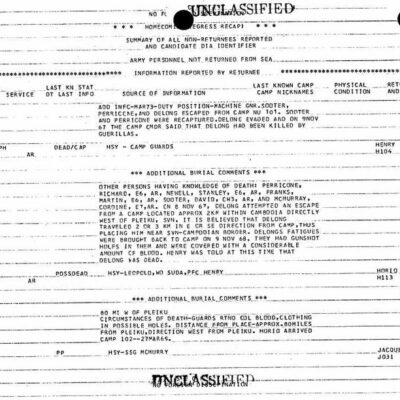
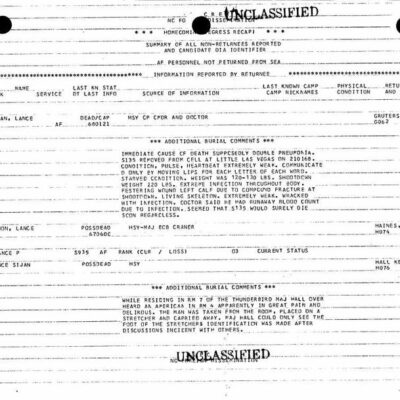
Vietnam War: POW/MIA Summary of All Reported Non-Returnees
$19.50 Add to Cart -
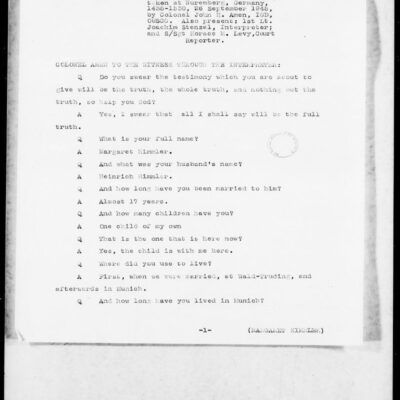
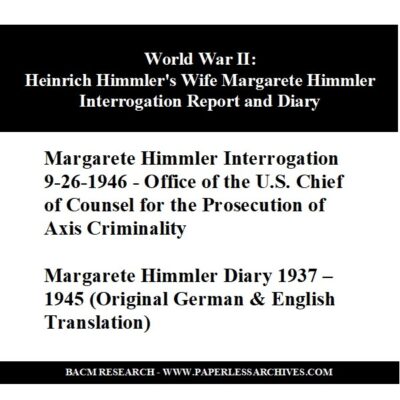
World War II: Interrogation Report and Diary of Margarete Himmler, Wife of Heinrich Himmler
$3.94 Add to Cart